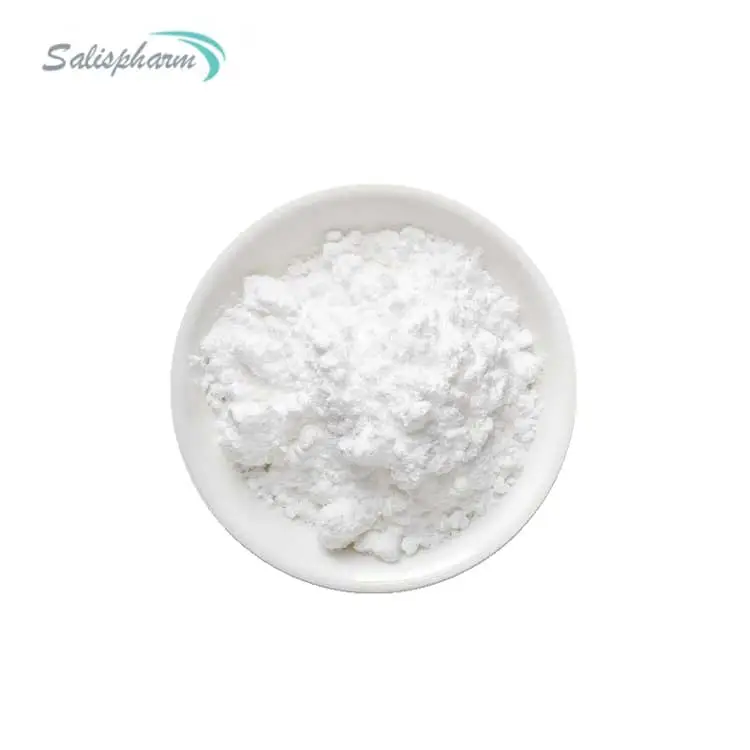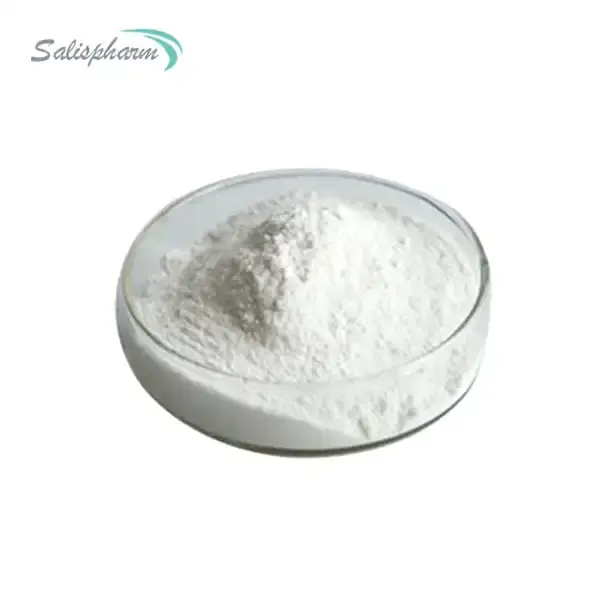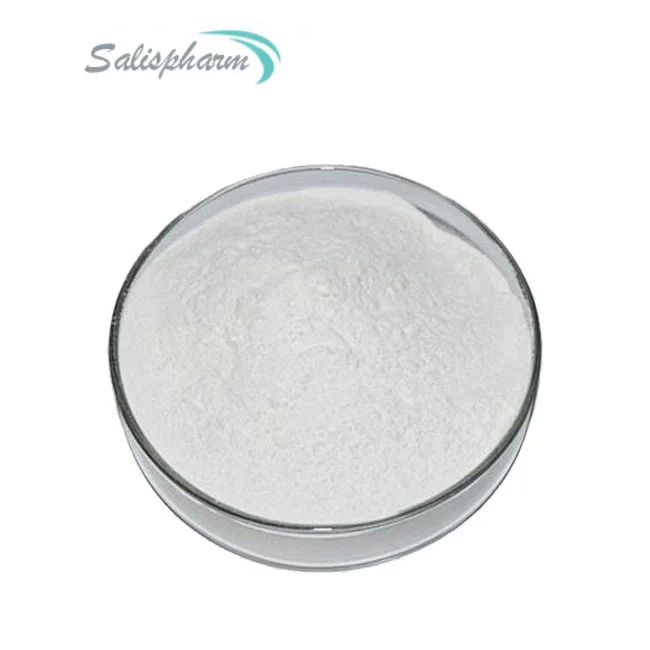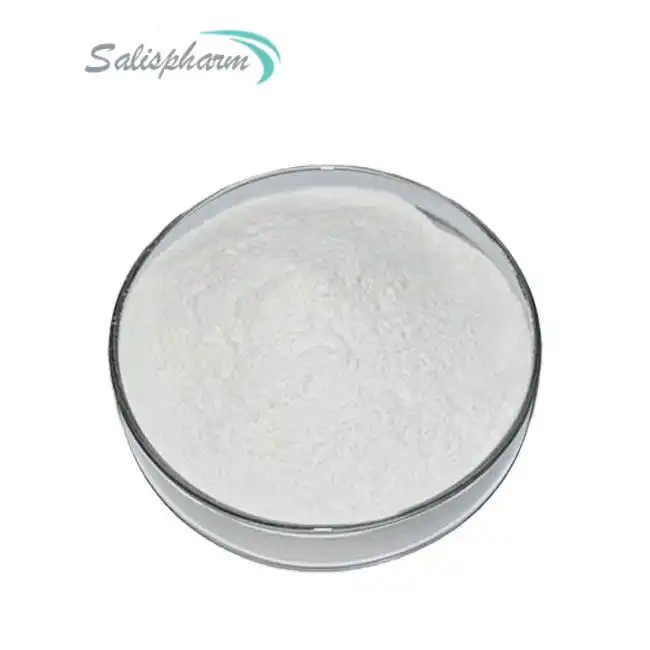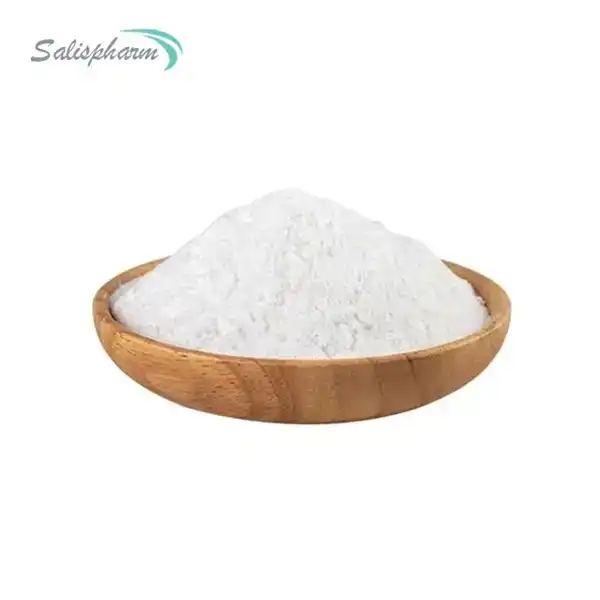Magnesium ethoxide, also known as magnesium ethanolate or magnesium ethylate, is an organometallic compound with the chemical formula Mg(OC2H5)2. This white, solid substance is widely used in various industrial and laboratory applications due to its unique properties and versatile nature. As an alkoxide of magnesium, it plays a crucial role in organic synthesis, serving as a base, a reducing agent, and a catalyst in numerous chemical reactions. In this blog post, we will explore the properties of magnesium ethoxide in detail, discussing its physical and chemical characteristics, applications, and synthesis methods.
How is magnesium ethoxide synthesized?
The synthesis of magnesium ethoxide is a fascinating process that showcases the reactivity of magnesium metal with alcohols. The most common method for preparing this compound involves the direct reaction of magnesium metal with anhydrous ethanol. This reaction is typically carried out under reflux conditions to ensure complete conversion and high yield.
The synthesis process begins by placing small pieces of magnesium metal in a reaction vessel containing anhydrous ethanol. The mixture is then heated to the boiling point of ethanol (approximately 78°C) and maintained at this temperature for several hours. As the reaction progresses, the magnesium metal gradually dissolves, forming magnesium ethoxide:
Mg + 2 C2H5OH → Mg(OC2H5)2 + H2
It's important to note that this reaction is exothermic and produces hydrogen gas as a byproduct. Therefore, proper safety precautions must be taken, including the use of a well-ventilated area or a fume hood to prevent the accumulation of potentially explosive hydrogen gas.
To enhance the reaction rate and yield, several modifications can be employed:
1. Addition of catalysts: Small amounts of iodine or mercury(II) chloride can be added to activate the magnesium surface and accelerate the reaction.
2. Use of activated magnesium: Magnesium turnings or powder with a larger surface area can increase the reaction rate.
3. Ultrasonic irradiation: This technique can help break down the oxide layer on the magnesium surface, promoting faster reaction kinetics.
4. Solvent-free methods: In some cases, magnesium ethoxide can be synthesized by ball-milling magnesium metal with anhydrous ethanol, eliminating the need for excess solvent and reflux conditions.
After the reaction is complete, the resulting solution is filtered to remove any unreacted magnesium and other insoluble impurities. The filtrate is then concentrated under reduced pressure to obtain crude magnesium ethoxide. For higher purity, the product can be recrystallized from anhydrous ethanol or sublimed under vacuum.
Industrial-scale production of magnesium ethoxide often employs continuous flow reactors or large batch reactors with precise temperature control and efficient mixing systems. These methods ensure consistent product quality and high yield while maintaining safety standards.
Understanding the synthesis of magnesium ethoxide is crucial for researchers and industrial chemists working with this compound. The ability to produce high-quality magnesium ethoxide is essential for its various applications in organic synthesis, materials science, and catalysis.
What are the chemical properties of magnesium ethoxide?
Magnesium ethoxide possesses a range of chemical properties that make it a valuable reagent in organic synthesis and materials science. Its behavior as a strong base, reducing agent, and versatile precursor for other magnesium compounds contributes to its widespread use in various chemical processes.
One of the most notable chemical properties of magnesium ethoxide is its strong basicity. As an alkoxide, it readily accepts protons from Brønsted acids, making it an effective base in many organic reactions. The basicity of magnesium ethoxide is attributed to the electropositive nature of magnesium and the strong electron-donating ability of the ethoxide ligands. This property allows magnesium ethoxide to facilitate various base-catalyzed reactions, including:
1. Aldol condensations
2. Claisen condensations
3. Transesterification reactions
4. Michael additions
5. Elimination reactions
In these reactions, magnesium ethoxide can act as both a base and a coordinating agent, often leading to improved selectivity and yield compared to other basic catalysts.
Another significant chemical property of magnesium ethoxide is its ability to act as a reducing agent. The ethoxide ligands can transfer electrons to various substrates, making magnesium ethoxide useful in reduction reactions. Some examples of its reducing capabilities include:
1. Reduction of carbonyl compounds to alcohols (Meerwein-Ponndorf-Verley reduction)
2. Reduction of nitro compounds to amines
3. Reduction of imines to amines
4. Reductive coupling of aldehydes and ketones
The reducing power of magnesium ethoxide is often enhanced when used in combination with other metal alkoxides or in the presence of hydrogen donors like isopropanol.
Magnesium ethoxide also exhibits interesting ligand exchange properties, which are crucial in its role as a precursor for other magnesium compounds. The ethoxide ligands can be readily exchanged with other alcohols, phenols, or carboxylic acids, leading to the formation of new magnesium alkoxides or carboxylates. This property is particularly useful in the synthesis of mixed-metal alkoxides and in sol-gel processes for the preparation of metal oxide materials.
In addition to its basic and reducing properties, magnesium ethoxide can serve as a Lewis acid in certain reactions. The magnesium center, being electron-deficient, can coordinate with electron-rich species, activating them for subsequent reactions. This dual nature as both a base and a Lewis acid makes magnesium ethoxide a versatile reagent in asymmetric synthesis and catalysis.
The reactivity of magnesium ethoxide with water is another important chemical property to consider. Like many metal alkoxides, magnesium ethoxide is moisture-sensitive and undergoes hydrolysis when exposed to water:
Mg(OC2H5)2 + 2 H2O → Mg(OH)2 + 2 C2H5OH
This hydrolysis reaction is the basis for the use of magnesium ethoxide in sol-gel processes for the preparation of magnesium oxide nanoparticles and thin films. By controlling the hydrolysis and condensation reactions, researchers can tailor the properties of the resulting magnesium oxide materials for various applications in catalysis, optics, and electronics.
Furthermore, magnesium ethoxide can participate in transmetallation reactions, where the ethoxide ligands are transferred to other metal centers. This property is exploited in the synthesis of various organometallic compounds and in the preparation of mixed-metal oxides for catalytic applications.
The thermal decomposition of magnesium ethoxide is another interesting aspect of its chemical behavior. When heated above its melting point (approximately 130°C), magnesium ethoxide begins to decompose, forming magnesium oxide and various organic byproducts:
Mg(OC2H5)2 → MgO + C2H5OC2H5 + C2H4 + other products
This decomposition pathway is important to consider when using magnesium ethoxide in high-temperature applications or when designing thermal processing methods for magnesium-based materials.
Understanding these chemical properties is essential for researchers and chemists working with magnesium ethoxide. By leveraging its basicity, reducing ability, ligand exchange properties, and Lewis acidity, scientists can develop new synthetic methodologies, improve existing processes, and create novel materials with tailored properties for a wide range of applications.
How is magnesium ethoxide used in industrial applications?
Magnesium ethoxide has found its way into numerous industrial applications, leveraging its unique chemical properties and versatility. From organic synthesis to materials science and environmental technologies, this compound plays a crucial role in various sectors of the chemical industry.
One of the primary industrial applications of magnesium ethoxide is in organic synthesis. As a strong base and mild reducing agent, it serves as a valuable reagent in the production of pharmaceuticals, agrochemicals, and fine chemicals. Some specific applications in this field include:
1. Synthesis of β-hydroxy esters: Magnesium ethoxide catalyzes the aldol condensation between aldehydes or ketones and esters, producing β-hydroxy esters, which are important intermediates in the pharmaceutical industry.
2. Production of vitamin E: Magnesium ethoxide is used in the key step of vitamin E synthesis, facilitating the coupling reaction between trimethylhydroquinone and isophytol.
3. Biodiesel production: As a transesterification catalyst, magnesium ethoxide promotes the conversion of vegetable oils or animal fats into biodiesel, offering a more environmentally friendly alternative to conventional petroleum-based diesel fuels.
4. Grignard reagent synthesis: Magnesium ethoxide can be used as a precursor for the preparation of Grignard reagents, which are essential tools in organic synthesis for carbon-carbon bond formation.
In the field of materials science, magnesium ethoxide plays a significant role in the sol-gel process for the preparation of magnesium oxide (MgO) and mixed-metal oxide materials. This application is particularly important in the following areas:
1. Catalysis: MgO nanoparticles and thin films prepared from magnesium ethoxide precursors are used as catalysts or catalyst supports in various industrial processes, including the production of biodiesel, hydrogen generation, and CO2 capture and conversion.
2. Refractory materials: High-purity MgO derived from magnesium ethoxide is used in the production of advanced refractory materials for high-temperature applications in the steel and cement industries.
3. Optical coatings: Magnesium ethoxide-based sol-gel processes are employed to create anti-reflective coatings and other functional optical thin films for use in solar panels, display technologies, and optical devices.
4. Nanocomposites: The controlled hydrolysis and condensation of magnesium ethoxide allow for the preparation of magnesium-containing nanocomposites with enhanced mechanical, thermal, and barrier properties for use in aerospace, automotive, and packaging industries.
In the field of electronic materials, magnesium ethoxide serves as a precursor for the deposition of magnesium-based thin films and nanostructures. These materials find applications in:
1. Dielectric layers in electronic devices
2. Buffer layers in superconducting materials
3. Magnesium-doped zinc oxide (MZO) transparent conductive oxides for solar cells and flat-panel displays
The environmental technology sector also benefits from the use of magnesium ethoxide. Some notable applications include:
1. Flue gas desulfurization: Magnesium ethoxide-derived MgO sorbents are used to remove sulfur dioxide from industrial exhaust gases, helping to reduce air pollution.
2. Water treatment: Magnesium ethoxide and its derivatives are employed in the production of advanced adsorbents and flocculants for the removal of heavy metals and other contaminants from wastewater.
3. CO2 capture and utilization: Magnesium ethoxide-based materials are being developed for efficient carbon dioxide capture and conversion, contributing to efforts to mitigate climate change.
In the polymer industry, magnesium ethoxide finds applications as:
1. A catalyst for ring-opening polymerization of lactones and lactides, producing biodegradable polyesters for medical and packaging applications.
2. An initiator for the synthesis of polyolefins with controlled molecular weight and end-group functionality.
3. A component in the preparation of magnesium-based Ziegler-Natta catalysts for the production of polyethylene and polypropylene.
The use of magnesium ethoxide in industrial applications continues to expand as researchers discover new ways to leverage its unique properties. Ongoing research focuses on developing more efficient and sustainable processes for magnesium ethoxide production, as well as exploring novel applications in emerging fields such as energy storage, smart materials, and nanotechnology.
As industries strive for more sustainable and environmentally friendly processes, the versatility and reactivity of magnesium ethoxide position it as a valuable tool in the development of green chemistry solutions. From enabling the production of biodegradable plastics to facilitating the synthesis of complex pharmaceutical intermediates, magnesium ethoxide plays a crucial role in shaping the future of industrial chemistry and materials science.
In conclusion, the properties of magnesium ethoxide make it an invaluable compound in various industrial applications. Its ability to act as a strong base, mild reducing agent, and versatile precursor for magnesium-based materials has led to its widespread use in organic synthesis, materials science, environmental technologies, and polymer production. As research in these fields continues to advance, we can expect to see even more innovative applications of magnesium ethoxide in the coming years, contributing to the development of more efficient, sustainable, and technologically advanced industrial processes.
If you are also interested in this product and want to know more product details, or want to know about other related products, please feel free to contact iceyqiang@aliyun.com.
References
1. Turova, N. Y., Turevskaya, E. P., Kessler, V. G., & Yanovskaya, M. I. (2002). The chemistry of metal alkoxides. Springer Science & Business Media.
2. Bradley, D. C., Mehrotra, R. C., Rothwell, I. P., & Singh, A. (2001). Alkoxo and aryloxo derivatives of metals. Academic Press.
3. Veith, M., Mathur, S., & Lecerf, N. (1999). Synthesis of nanocrystalline MgO via a sol-gel-like process using metal alkoxides. Journal of Materials Chemistry, 9(12), 3069-3079.
4. Sharma, Y. C., & Singh, B. (2009). Development of biodiesel: current scenario. Renewable and Sustainable Energy Reviews, 13(6-7), 1646-1651.
5. Deshmane, V. G., & Adewuyi, Y. G. (2013). Synthesis and kinetics of biodiesel formation via calcium methoxide base catalyzed transesterification reaction in the absence and presence of ultrasound. Fuel, 107, 474-482.



